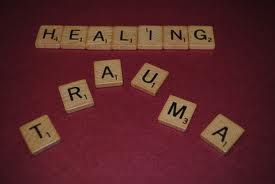
Trauma/EMDR
Everyone experiences trauma in different ways. Some may attempt to forget while others may have the trauma live with them day in and day out. Traumas can be experienced emotionally, physically and verbally. Our practice is trained through different treatment techniques to help you heal from trauma.
Distinguishing EMDR from other therapies is the unique element of bilateral stimulation (e.g. eye movements, tones, or tapping) during each session. EMDR allows both sides the brain the access the information in that separate filing cabinet and reorganizes it so that it can be filed more appropriately. Information becomes filed with no emotion attached and the intensity is released. Any disturbing memories or thoughts become filed like an old memory and can be set aside.
EMDR seems to have a direct effect on the way that the brain processes information. Normal information processing is resumed, so following a successful EMDR session, a person no longer relives the images, sounds, and feelings when the event is brought to mind. You still remember what happened, but it is less upsetting. Many types of therapy have similar goals. However, EMDR appears to be similar to what occurs naturally during dreaming or REM (rapid eye movement) sleep. Therefore, EMDR can be thought of as a physiologically based therapy that helps a person see disturbing material in a new and less distressing way.
